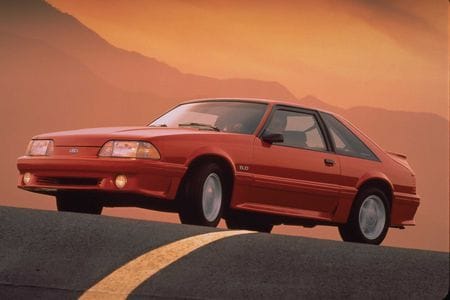This Friday the Ford Mustang will celebrate its 45th year of production so today we take a look at the second and third generation of the pony car.
The Second Generation 1974-1978

By 1973, government emission regulations (and, later in the year, gas prices) were beginning to affect the sale of performance cars in the United States and the Mustang was no exception. Lee Iacocca, the president of Ford, had ordered a new Mustang for the 1974 model year based on the Ford Pinto platform and the new model was introduced in August of 1973, just two months before the OPEC oil embargo.
Called the Mustang II, the new model was 19 inches shorter and 490 pounds lighter than the 1973 model. Body styles included a notchback, including a “luxury” Ghia model (Ford had purchased the design studio) as well as a 2+2 fastback. A convertible body style was never available and, for 1974, only a 140 cubic inch, 88 horsepower 4-cylinder engine or a 171 cubic inch, 105 horsepower 6-cylinder engine was available (hello fuel economy, good-by performance).
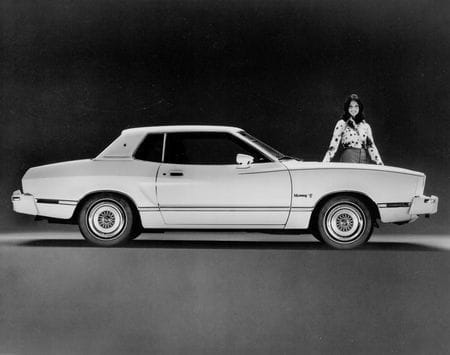
Although the Mustang II has been much maligned both by the automotive press as well as the “true” Mustang aficionados, the fact remains that it was probably the right car, for Ford, at the right time. First year sales were 386,000, compared with just under 135,000 models sold the year before.
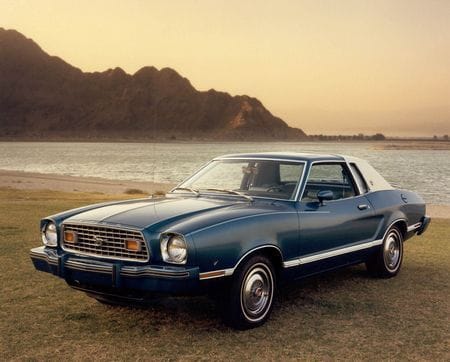
A V-8 engine returned to the lineup for 1975, but the 302 cubic inch engine produced just 130 horsepower and it could only be ordered with an automatic transmission. Opera windows replaced the standard rear quarter windows on the Ghia model (it was after all, the 70’s) and radial tires became standard equipment.
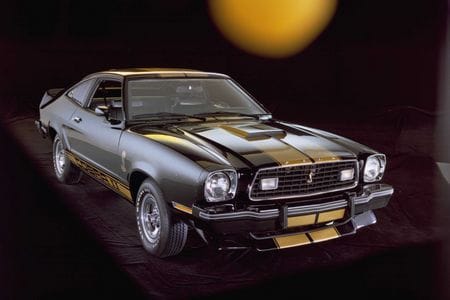
Changes for ’76 included two trim packages – the “Stallion Group” (a black trim package) and the Cobra II that included an assortment of add-on spoilers, louvers and simulated scoops, while the ’77 model featured a T-Top option for the hatchback (this is getting exciting, isn’t it?).

1978 turned out to be the last year for the Mustang II. Variable-ratio power steering was available as was the King Cobra option package that came replete with a reverse hood scoop, a large snake decal on the hood (to compete with the “screaming chicken” decal found on contemporary Trans Am’s), T-tops, blacked-out trim and a performance suspension.
The Third Generation 1979-1993
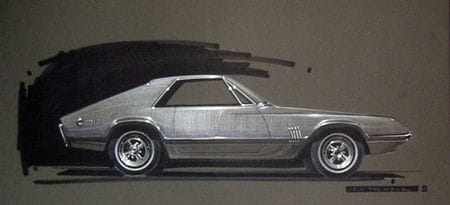
1979 saw the genesis of the third generation Mustang with a completely new body that was based on Ford’s Fox platform (that also underpinned the Fairmont and Mercury Zephyr). It also represented a new chapter in Ford engineering as it was four inches longer as well as taller than its predecessor, yet even with the federally-mandated 5 mile per hour bumpers, it tipped the scales at 200 pounds less than the 1978 model.

Ford termed the new design “Euro” and other than the Mustang logo on its flanks, there were no other design cues that gave any indication of its lineage. The new Mustang had a larger trunk and engine compartment, while the back seat was more accommodating to adults. Body styles initially were offered in coupe and hatchback configurations, while a convertible was again offered beginning in 1983. Trim levels included the base L, GL, GLX, LX, GT (beginning in 1982 after a 12 year hiatus), Turbo GT, Cobra, SVO (beginning in 1984) and Cobra R (1993 only).

Ford began developing a front-wheel drive replacement for the ‘Stang in the early 1980s, but the thought of such a travesty caused an uproar within the community of Mustang owners. Faced with a rebellion of their most loyal customers, Ford chose, instead, to give the Mustang a major facelift in 1987 and market the new model as the Ford Probe in 1989.
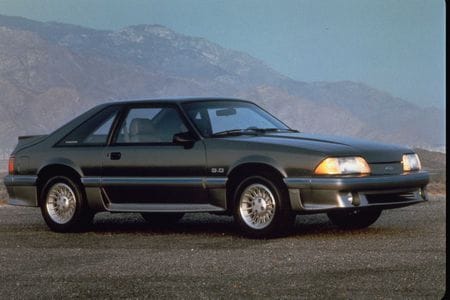
The changes that accompanied the 1987 re-design included flush halogen headlamps, re-styled front and rear fascias and fuel injection on the 5.0 liter engine that powered the GT. Most of the angularity was taken out of the front styling to give the pony car a more rounded, aerodynamic look.
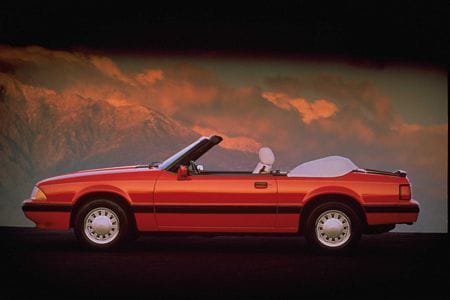
Although 1989 marked the 25th anniversary of the nameplate, the only nod to tradition involved placing a galloping pony badge on all Mustangs built between April 17, 1989 and April 17, 1990. The Mustang continued to soldier on with only minor modifications as 1993, the last year for this iteration, saw the addition of the SVT Cobra midway through the model year while the SVT Cobra R (a model intended for club racing with no radio, rear seat or sound dampening and a specially tuned suspension) was sold out even before the run of 107 units had begun.
